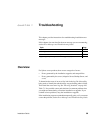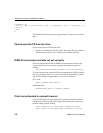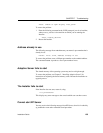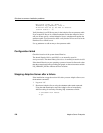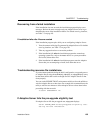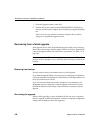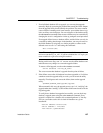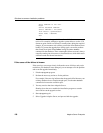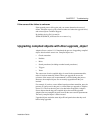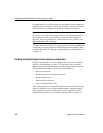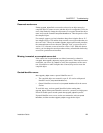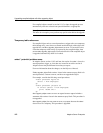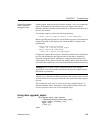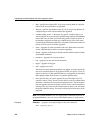
CHAPTER 7 Troubleshooting
Installation Guide 107
1 If an individual database fails to upgrade, you can retry that upgrade
manually. Begin by correcting the problem that caused the failure. Output
from the upgrade utility should identify the problem. The most common
cause of failure is running out of some resource: space (either data or log),
locks, auxiliary scan descriptors. You can add space to the database using
the
alter database command. Other resource failures may be correctable by
changing the server’s configuration via the
sp_configure stored procedure.
If an upgrade failure leaves a database offline, and the failure can only be
corrected by making data changes in the database, you can gain access to
the failed database by using
isql or a similar program to connect to the
affected server as user “sa” and issuing this command:
dbcc traceon(990)
Note This trace flag grants access only to user “sa”. It is not sufficient to
use an account having “sa_role”. If you have disabled the “sa” login, you
must re-enable it to get access using this method.
Having set this trace flag, user “sa” can now use the offline database and
make the necessary changes to correct the upgrade failure.
To restart a failed upgrade, use the
online database command:
online database <failed_db_name>
The server restarts that database’s upgrade from the point of failure.
2 If the failure occurs after all databases have been upgraded, or if a failure
somehow causes the upgrade utility to crash, you can re-run the utility
manually. First diagnose and correct the failure, then run the upgrade
utility:
$SYBASE/$SYBASE_ASE/upgrade/upgrade
When restarted in this way, the upgrade process says it is “verifying” the
upgrade rather than “starting” it, but it makes all the same checks as for the
original upgrade.
To verify that a database has upgraded successfully, you can check any
database’s upgrade status using the
online database command. If any
upgrade is required for a database, this command performs it. You may
also use a procedure such as this to check all databases at a given
installation:
declare @dbname varchar(255)
select @dbname = min(name)
from master..sysdatabases



